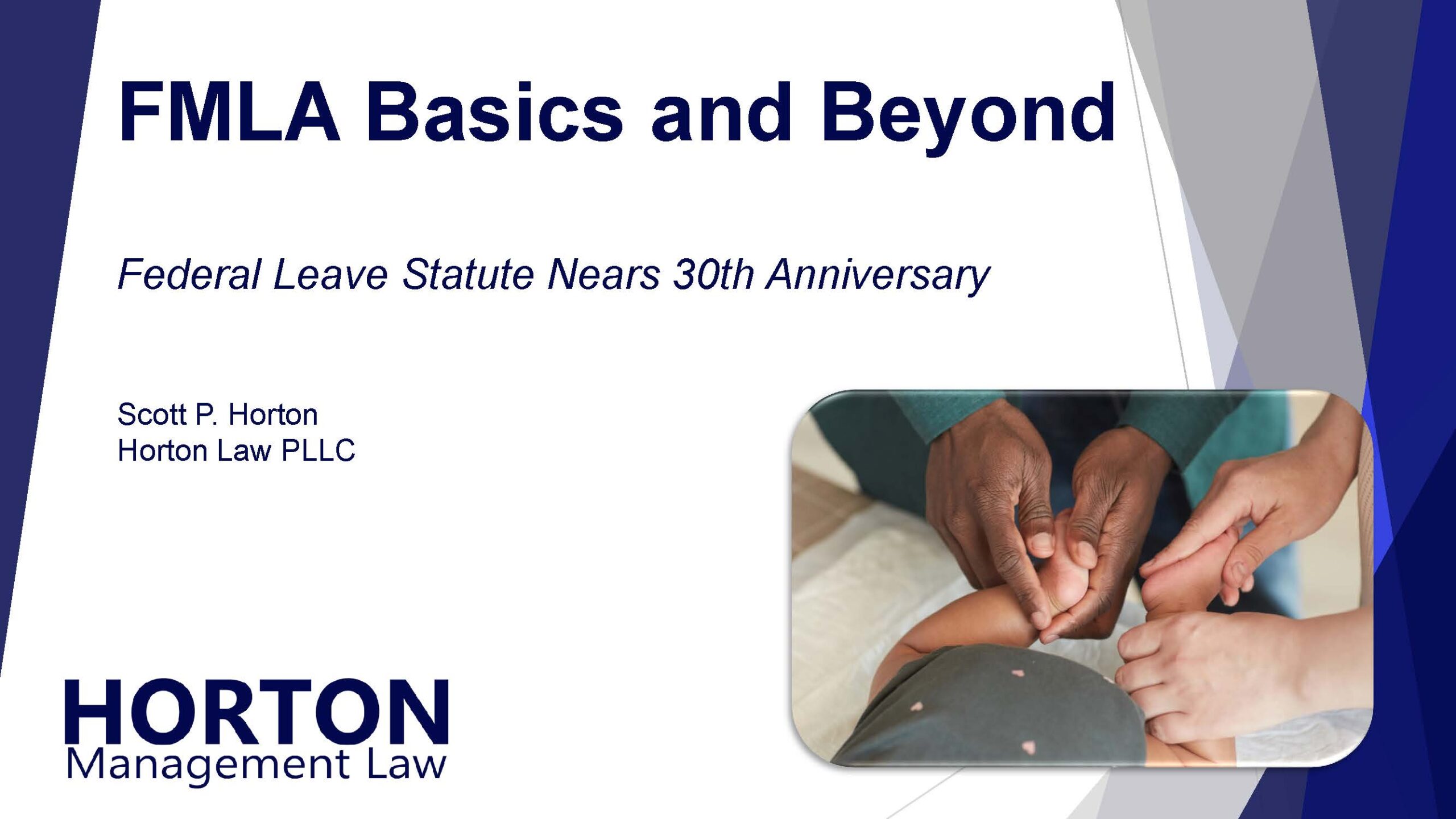When employees request disability accommodations, New York employers must engage them in an “interactive process”. The goal is to identify the limitations resulting from the disability and potential accommodations that could overcome those limitations. Both employees and employers have obligations in the accommodation process.
Employee Request for Accommodation
Employers must engage in an interactive process with employees who request accommodation. The employee request is some indication of the need for adjustments related to the employee’s own medical condition.
Under the federal Americans with Disabilities Act and the New York Human Rights Law, employers are only obligated to accommodate an employee’s medical condition. These laws do not require accommodations of a family member’s medical condition, Unlike the FMLA or the New York Paid Family Leave law requirements, these reasonable accommodation protections only apply to an employee with a disability.
Indirect “Requests”
It is not absolutely necessary in every case that the employee actually verbalize or request accommodation. First, if a family member contacts the employer and provides enough information about the employee’s medical condition and need for some accommodation, then you couldn’t require the employee to personally ask for it him or herself. Likewise, if the need for accommodation is abundantly clear, the employer can’t necessarily wait for the employee to ask. For example, an employee in a wheelchair need not specifically state that he can’t climb up stairs.
Insufficient Requests
On the other hand, there are situations where the employee might ask for a change in the workplace but not make it clear that it’s related to a medical condition. Then, if the employer doesn’t have other independent knowledge of a medical condition, that request wouldn’t necessarily trigger any obligation to engage in an interactive process for accommodation under the disability discrimination laws.
For example, an employee says that they need another screen or they want a larger monitor for their computer at work. That in and of itself is not obviously a disability accommodation request. Unless the employer knows that there is some vision or other related condition, it’s plausible that somebody might just happen to prefer a larger monitor but not actually need one for a medical reason. But if the company already knows that the person is visually impaired when they ask for a larger monitor, then this would qualify as a request for accommodation, and the interactive process should begin.
Engaging in the Interactive Process
“Interactive process” is a phrase that comes out of the federal regulations interpreting the ADA. The EEOC’s regulations specifically refer to it as an “informal” process. This doesn’t mean informal in the sense of a casual conversation in the hallway. Really, it should be relatively formal as far as employee relations matters go. It’s only informal in the sense that the interactive process doesn’t have to have a lot of documentation back and forth; doesn’t directly involve outside agencies; nothing has to be filed; and under the ADA the company is not obligated to put in writing–for example, here are the accommodations we think you should have, then employee has a certain amount of time to object or something like that. So, in that sense, “informal.” But it doesn’t mean that it’s not taken seriously.
In some situations, it’s pretty easy to have the “interactive process”. If an employee says, “I need a larger monitor”. The company says, “How much larger do you need”? The employee might suggest a 60-inch screen, but the company says, “How about we give you 30 inches”? If the employee says, “Okay. Yeah, that’s fine. I should be able to see what I need there,” then it’s done. The monitor is provided, and everyone goes forward. Technically, that’s an interactive process.
Of course, in some cases, the company will need more information from the employee to evaluate possible accommodations. This might include something from their doctors as to why they need an accommodation what the accommodation might need to look like.
Obtaining Medical Information
Unless the medical condition and need for accommodation are obvious, employers can require employees to provide information about their disability. There are relatively few disputed cases where it’s so obvious that you couldn’t ask for any medical documentation. If it is that obvious, you’re probably either accommodating or able to make the analysis without medical information. The important question is more about the scope of the medical information when you choose to ask for it. Employers should not go beyond the possible need for accommodation. So you can’t expect a complete medical history on an employee just because they say they have carpal tunnel and need some accommodation for typing.
HIPAA Compliance
Employers can ask an employee to sign a HIPAA authorization so that the company can get the information directly from the medical providers. Or you can ask the employee to get the information from the doctor and then hand it over to human resources. In that scenario, the doctor doesn’t technically need a release, and the employer doesn’t need one to get the medical records.
Employers must maintain the information confidentially once they get it. But within the organization you can share the information on a need-to-know basis to conduct the interactive process and make accommodations.
Using Job Descriptions
It’s usually a good idea to make sure the doctor has a job description that accurately explains what the employee is expected to do. The doctor should reference the job description in giving feedback on the need for accommodations.
Second-Guessing the Employee’s Doctor
Employers don’t have to accept the doctor’s opinion, restrictions, or suggestions in all cases. You would want to have a good reason for disagreeing with what the doctor says. But if you believe and have some basis for the conclusion that the doctor’s recommendation is ridiculous, then you can act on that. You might even want to get a second opinion in some cases. That’s possible as part of the interactive process as long as you’re being reasonable and not throwing unrealistic obstacles in the way of an employee getting an accommodation.
Interactive Process Is a Two-Way Street
Always remember that the interactive is something that both the employee and the employer must participate in. So, if the employer tries to get information from the employee and the employee won’t provide it, then that will ultimately reduce the company’s obligation to provide the accommodation in some ways.
Likewise, however, if the employee asked for an accommodation, and the employer just flat-out refused to consider it or engage in any sort of interactive process, that is going to hurt the company in an employment discrimination case alleging failure to accommodate. Even if the company probably wouldn’t have been able to accommodate this employee, it’s going to be a big evidentiary problem that they didn’t even try by interacting with the employee.
Choosing an Effective Accommodation
As part of the interactive process, the employer must evaluate the circumstances, what accommodations are available, and whether they create an undue hardship. Then you wrap the process up by advising the employee of the decision either to allow the requested accommodation, pursue an alternative, accommodation, or deny the request altogether. Other outcomes include a finding that the employee doesn’t actually need an accommodation to perform the essential functions of the job. Or it might be that the employee no longer needs to perform a particular job function because it’s not essential.
There are cases where an employee receives an accommodation, but it doesn’t seem to work. Then the interactive process could recommence. Plus, any individual employee could have multiple disabilities that need to be accommodated in different ways. Then interactive processes could be going on simultaneously along multiple paths for different medical conditions.
The ultimate goals of the interactive are to understand the employee’s medical limitations, determine the possible accommodations to evaluate effectiveness and feasibility of accommodations, choose among available alternatives, and ideally reach agreement with the employee on the accommodations.
Employer’s Choice Among Alternatives
Employees are not legally entitled to the exact accommodation that they request. If there are alternative accommodations that would also enable the employee to perform the essential functions of their job, the company has the right to determine which combinations would be effective. The employer can choose any accommodation–whether because it would be cheaper or otherwise less burdensome on the company–as long as it’s still effective. That is, as long as the employee can perform the job and does not suffer medical consequences as a result.
You would ideally like the employee to agree and acknowledge that they accept the accommodation that is being afforded. But they don’t have to. And the employer can still go forward and say this is what we’re going to do. Most employers won’t want to get to the pure “take-it-or-leave-it” point. It is better to try to work it out and get the employee’s consent. But, ultimately, it’s the employer’s choice.
Additional New York City Requirements
Cooperative Dialogue
The New York City Human Rights Law was amended effective October 2018 specifically regarding the reasonable accommodation issue. The amendment added the concept of a “cooperative dialogue” for employees working in New York City.
Within NYC, the employer and employee now must engage in good faith in a written or oral dialogue concerning:
- the employee’s accommodation needs;
- potential accommodations that may address their accommodation needs, including alternatives to a requested accommodation; and
- the difficulties that such potential accommodations may pose for the employer.
This is essentially the interactive process, but probably now constitutes a heightened requirement that the employer actually address each of these factors that the ADA and New York State Human Rights Law don’t specifically identify.
Written Determination
Perhaps even more tangible, the NYC Human Rights Law now requires that employers provide employees who have requested accommodations with written final determinations identifying any accommodation granted or denied. (To be clear, this only applies to employees who work in New York City.)
This all basically means that if you’re an employer with an employee in New York City who asks for a disability accommodation: First, you must entertain a cooperative dialogue with them. Then you must provide a summary report that says, in essence, these are the accommodations that we considered and these are the ones that we are providing. Neither the ADA nor the New York State Human Rights Law requires a written determination. But New York City now does. Failing to provide the written determination violates the NYC Human Rights Law as a form of employment discrimination.
Is This All We Need To Know About Accommodating Disabilities?
Probably not. Unfortunately, employee medical issues can be complex challenges for employers. The ADA and state and local disability discrimination laws are not even the only legal parameters at play in many of these situations. But knowing when you need to engage in the interactive process and roughly how that works is a major step in the right direction.
If you want to learn more, watch our related webinar: Accommodating NY Employees with Disabilities.
And here are some additional articles discussing employee disability issues:
What Is a Disability Under the ADA?
Reasonable Accommodations of Disability in Employment
Is Time Off a Reasonable Accommodation?
Mental Health Leave Under the ADA
The U.S. Equal Employment Opportunity Commission also offers relevant guidance here.


